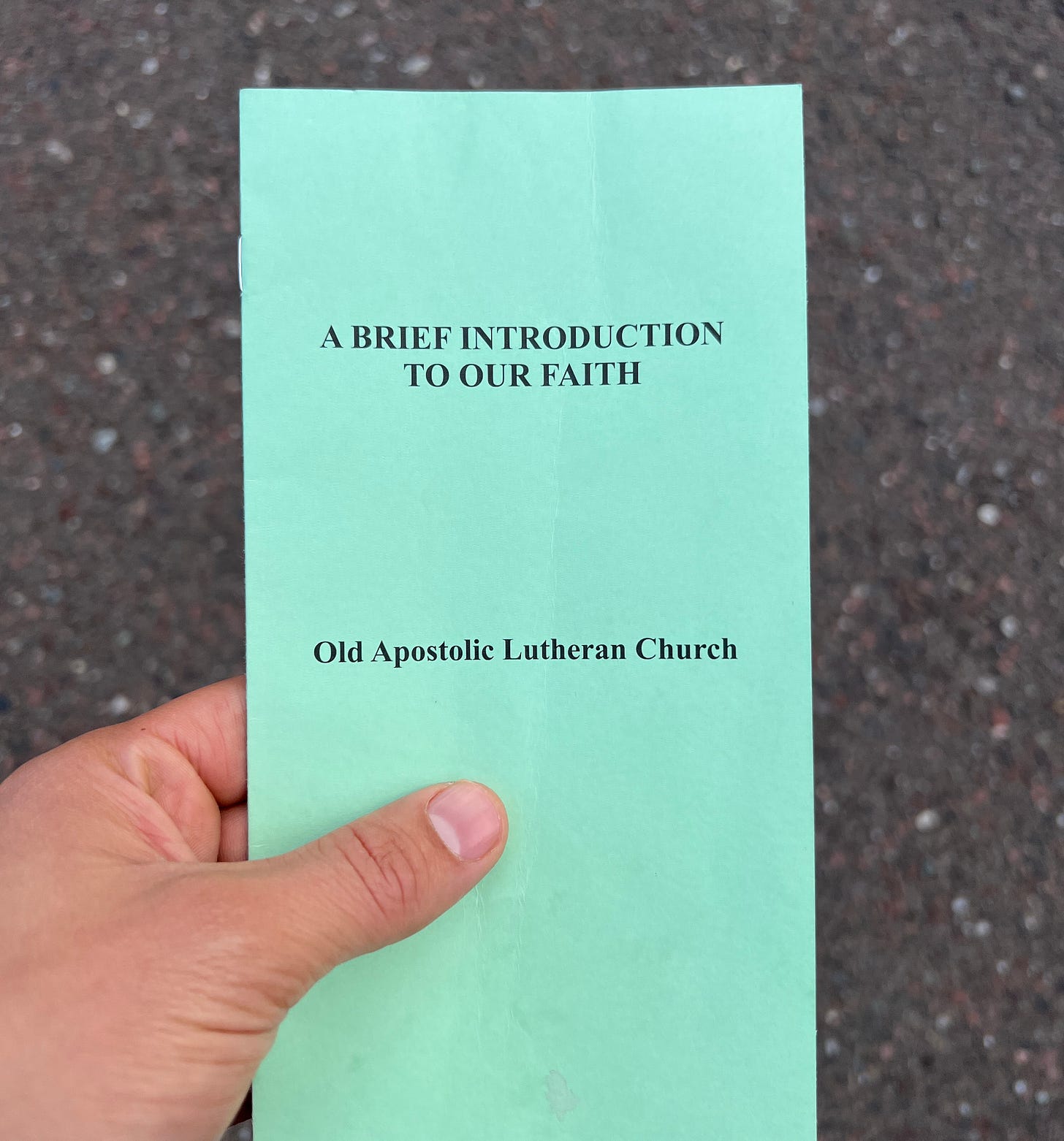Attending the Old Apostolic Church
Another Sunday service: the similarities and the differences
Part of reconnecting with my family and childhood is diving deeper into the religion we grew up in. While the official name is the First Apostolic Lutheran Church (FALC), it’s commonly called the ‘New Apostolics,’ and that designation implies something must have come before and demands the question, “Why New? And is there an Old?”
There is, in fact, an Old Apostolic Lutheran Church, and I don’t plan on writing too extensively about it, but I am curious as it relates to the church I grew up in because they were one a few generations ago.
We share ancestors; Scandinavians brought the Apostolic religion to rural Upper Michigan when they came for copper mining jobs in the late 1800s. Then, shortly before the turn of the century, the two churches split and have since drifted into completely separate worlds that operate alongside each other in this small community.
So, I wanted to attend services of both congregations, speak to members, and try to understand the differences between the two main Apostolic branches in the Keweenaw.
Since starting to explore the groups, I’ve come to learn there are a lot more than just the two, like the famous Lestadian split from the FALC in 1973, of which I’ve stumbled upon meeting recordings that are largely in the Finnish language.
The dividing speaks to the nature of all organized religions that inevitably grow and change every few generations. I’m struck by how, even within this very specific piece of Lutheranism in this very specific rural piece of America, splits and differences in faith abound.
I’m also shocked at how little communication or cooperation exists between the congregations.
When seen from the broader view of Christianity or even within Lutheranism itself, the Apostolic branch is very distinct, and groups have a lot of overlap. From 5,000 feet, or even the perspective of outsiders in our small community, all congregations look like the same thing, but when zoomed in, there are a myriad of differences.
I recently heard a friend who’s steeped in the history of the area refer to them as different tribes of Finns operating in the same community, differentiating themselves with subtle changes in attire and religious practice the wider community doesn’t even notice, but within the groups, we usually immediately recognize one another.
All of that fascinates me to no end.
And that’s how I found myself, for the first time in my life, strolling across a parking lot on a sunny Sunday morning in early September, taking a deep breath and reaching for the door handle to the Old Apostolic Church.
Keep reading with a 7-day free trial
Subscribe to 18 Uncles to keep reading this post and get 7 days of free access to the full post archives.





